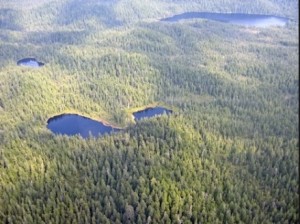Planting Forests as a Transition to an Energy Future Reliant on Renewables: Implications for Ireland
We know the bottom line is giving up on feeding off fatty fossil fuels and going with a leaner diet. Solar, wind, wave, tidal and hydro offer a healthier diet. But we need a vitamin supplement for the largely intermittent energy sources, and to give us time to fully develop renewables and resource efficiencies.
Some offer nuclear as a low-carb transition energy source, but it has so many other unhealthy ingredients (like its waste) and it’s very expensive and heavily subsidized. And when it goes wrong, as it has three times in past 30 years, it goes very, very wrong with damages and destruction extending for thousands of years.
Others offer natural gas through fracking as a transition fuel. But it is still a fatty fossil, even if less fatty that oil or coal, and it ruins the countryside and can deplete increasingly scarce water resources. Moreover, it’s loaded with methane.
Energy efficiency measures, and demanding less energy, are effective, relatively inexpensive, and yet they remain locked in the cupboard. It seems we are incapable of doing with less.
So let’s not forget the forests that act as organic, self-sustaining mechanisms for reducing carbs. The trees pull carbon dioxide out of the air and lock it into the wood and soil beneath the trees. They already exist, but do need to be protected against development, they sow themselves, and they can replace unproductive farmland without undermining food supplies.
Richard A. Houghton, acting president of the Woods Hole Research Center in Massachusetts calculates that aggressively turning 1.2 billion acres of degraded or marginally productive agricultural land into forests, combined with stronger efforts to protect existing forests, could slow sharply or even halt the rapid growth of carbon dioxide in the atmosphere. That would give the world a few decades for an orderly transition from fossil fuels to renewable energy.
Such a strategy could make a significant contribution to a sound energy policy.
Unfortunately, in Ireland there seem to be substantial obstacles. Fracking for natural gas is being seriously considered for approval, on one or both sides of the border, and there are definite commitments to significantly expand dairy herds, through Harvest 2020 in the Republic of Ireland (RoI) and by general policy in Northern Ireland (NI).
Both activities likely will lead to a large release of methane to the atmosphere increasing a short-lived but substantially more potent greenhouse gas (GHG ) than carbon dioxide. In effect these increased methane releases could wipe out any benefit from planting acres of trees.
The government in the RoI is trying to convince the European Union to cut Ireland a special deal whereby Ireland will cut its GHG emissions by absorbing carbon dioxide in bogs and in forests in exchange for its Harvest 2020 policy of doubling dairy products (and methane). It is not clear how many trees need to be planted, where, and at what cost. Assuming that the government is able to stop the illegal harvesting of peat from protected bogs, and the continuing exploitation of unprotected bogs — a very large assumption — and recognizing that Ireland has some of the less forested land in the EU, the increase in methane emissions will likely wipe out the benefits of carbon absorption from bogs and tree planting.
That will leave the RoI where it is today, unable to meet its EU obligations for reducing GHGs by 2020. That in turn will trigger the need to purchase GHG offsets, to be paid for either by the taxpayers or from potentially dramatic reductions in other sources of GHGs, such as restrictions on use of vehicles by the general public.
Is everybody ready to sacrifice, their tax Euros or lifestyles, so the government can implement Harvest 2020 and to reward the farming community, which will increasingly be comprised of large commercial farms and not the clichéd small family farm of olden days, or potentially approve fracking, which will reward the fossil fuel industry and perhaps a few farmers whose land is exploited (while potentially ruining the land and water of neighboring farmers).
Sources
Justin Gillis, “Restored Forests Breathe Life Into Efforts Against Climate Change,” The New York Times (23 Dec 2014). www.nytimes.com/2014/12/24/science/earth/restored-forests-are-making-inroads-against-climate-change-.html



No comments yet, add your own below